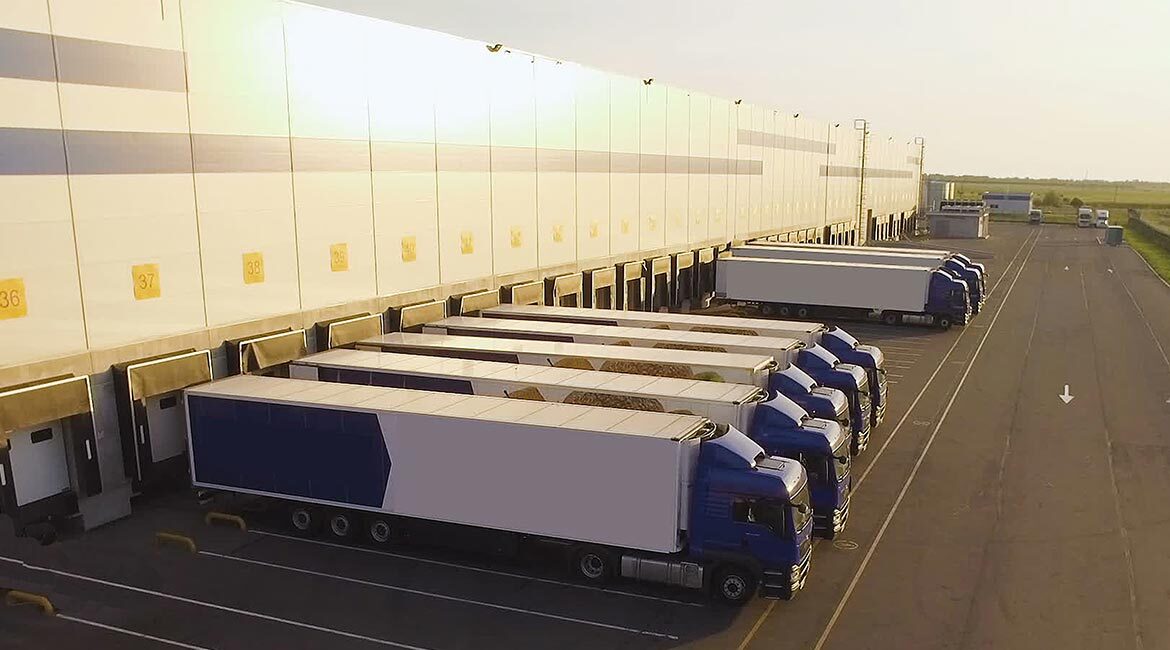Reliable Cross-Docking Location Problem under the Risk of Disruptions

Purchased from Istock.com. Copyright.
Nowadays many industries are affected by consequences of disruptions caused by natural disasters or man-made events. In order to manage such consequences, this article seeks to develop a reliable transportation network to hedge against risks of cross-docking failures. In real environments, applying a recovery policy is a disruption handling strategy. Here, this policy is addressed by reallocating suppliers to alternative cross-docks and altering the transportation strategy to move shipments. It is tested on the logistic part of a car-manufacturing company with a vast supply chain, including about 600 suppliers, as part of our case study. It is aimed at diminishing disruption subsequences in such a network. Keywords: Reliability; Cross-dock location design; Disruption; Recovery strategy
Different Distribution Strategies
In today’s world, distribution strategy plays a critical role in all supply chains. As claimed by [1], about 30% of goods prices are incurred in the distribution process. Thus, enhancing distribution strategies along with customer satisfaction is essential to survive in the competitive marketplace. There are several strategies in distribution networks, mainly including direct shipping, milk runs, and cross-docking [2]. Direct shipment is favoured when the demand is near full truckload and due date is important, while, in less than truckload, other consolidation-based strategies are less costly and preferred. Here, the focus is on cross-docking, which is compared to direct shipment, in Figure 1.

Figure 1a. Direct shipment

Figure 1b. Shipment through cross-docking as a consolidation point
The network under study consists of cross-docks as consolidation facilities, suppliers and customers/retailers. Cross-docking is a process in which “products from different suppliers are collected and received at a cross-docking terminal, consolidated with other products shipped to the same point and finally delivered to the final destinations,” within less than 36 hours [3]. Cross-docking facilitates product flow, decreases vehicle numbers and inventory levels. It is considered as a Just-in-time (JIT) approach. Based on literature, due to the fast-moving nature of cross-docking, it leaves the transportation systems vulnerable to delays, failures, accidents, unforeseen events, and demand fluctuations [4].
A Tradeoff between Establishing Cost and Potential Lost Sales
The best location for cross-docks is an optimization problem in the supply chain. In classic facility location optimization problems, all facilities are assumed reliable, while in practice facilities are exposed to unexpected events which may partially or completely disable them for an uncertain amount of time [5], [6]. Natural disasters (e.g. earthquakes, floods, hurricanes), labour strikes, political instability, and equipment failures can lead to disruptions [6]. Take the 2005 Hurricane Katrina as an example. It was one of the costliest natural disasters in the history of the USA, idling all production and transportation facilities in the Gulf Coast region. Another real case, the 2011 earthquakes and tsunami in Japan reflected the vulnerability of companies to supply chain disruptions. After such events, companies applied recovery plans, such as multi-sourcing.
Using alternative cross-docks in case of disruption is another recovery plan in similar supply chains in which, instead of considering many scenarios against disruptions, each supplier is assigned to a group of cross-docks. Cross-docks are ordered by levels, and when the lowest-level cross-dock is disrupted the service is provided by the next level operational cross-dock, as backup. Backup plan can be designed in multi-levels (|R|≥1) (see Figure 2), 3 levels for instance. In addition to cross-docking, direct shipment can be used to move products. This approach can be of use in food, clothing, and car-making industries [6]. Each cross-dock may fail with a given probability and all cross-docks are considered unreliable. Not serving a customer incurs a penalty cost of lost sales.

Figure 2. Different levels in a cross-docking network
According to this approach, a first-stage decision leads to a tradeoff between establishing costs of cross-docks and lost sale penalties. For example, in a case study of the car-making industry, in [6], normal conditions establish a level 1 cross-dock as optimum, while for an unreliable network, the best cross-dock reaches level 2.
In this case, daily supply chain transportation costs are about $29,132 in normal conditions, where both direct shipments and cross-docking strategies are allowable. Regarding the geographical distribution of suppliers and customers, and the demand volume, about 42% of pallets go through cross-dock and the remaining are sent directly. If a disruption happens in the cross-docking centre, two scenarios are possible: I) passive acceptance by sending all parts directly, and II) using a recovery plan. In this case, part shortages are not allowed, so lost sales penalty for each customer is set at considerable amounts.
In the first scenario, total daily network costs are $58,003 (about 99% more than costs in normal conditions), hence, failure at the cross-dock can cause a huge expense on the supply chain and should be contemplated, in advance. In the second scenario, applying a recovery plan and considering a disruption probability (q) of 0.1 for a cross-dock leads to an approximate 8% increase in total costs, compared to normal conditions, while for q=0.2, 19% more in costs is charged on the distribution system to handle disruption risks. If the failure probability raises from 0.1 to 0.5, there will be a 41.5% increment in the total cost of the system to handle the risk. In these cases, two locations are chosen to establish cross-docks.
In order to observe the effects of disruption probabilities and different levels (R) on the total cost, the problem is assigned different values for q and R. q varies from 0.1 to 0.5, with a step size of 0.05, and R=2 and 3. The results are indicated in Figure 3. The computation detail can be seen in [6].

Figure 3. The effect of increasing q and R on the total cost of the network (adapted from [6])
Additional Information
For more information on this research, please read the following research paper: Hasani Goodarzi, A., et al., Reliable cross-docking location problem under the risk of disruptions. Operational Research, 2020.



